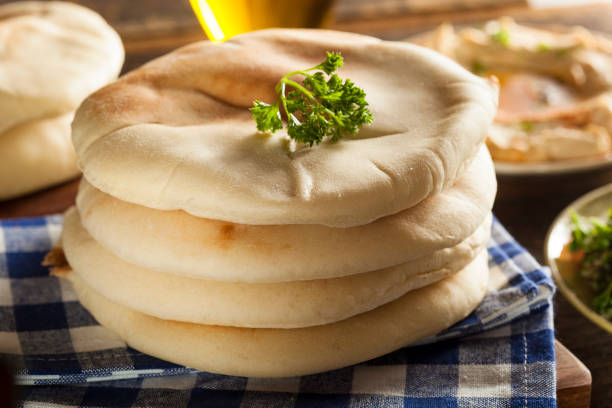I’ve always wanted to get better at cooking, especially with recipes that don’t seem too complicated.
That’s why I thought starting with something basic like unleavened bread would be a good idea.
It’s a simple recipe without yeast, making it perfect for beginners like me.
I’m going to share step-by-step instructions on how to make this bread.
The goal is to make the process easy to follow, so you can feel more confident in the kitchen.
This bread is great because it doesn’t need much time to rise and you can pair it with almost anything.
So, let’s dive in and start baking!
Understanding Unleavened Bread
Unleavened bread is a simple bread made without the use of leavening agents such as yeast, baking powder, or baking soda.
This results in a flat and dense bread, which can vary from soft and pliable to crisp and cracker-like, depending on the recipe and cooking method.
It’s a versatile food, used in various cultural cuisines and religious traditions.
Ingredients:
To serve around 4-6 people, you’ll need:
- 2 cups of all-purpose flour (In South Africa, this is roughly 500 ml or 280 grams)
- 1/2 teaspoon of salt (2.5 ml)
- 2/3 cup of water (approximately 160 ml)
- 2 tablespoons of olive oil (30 ml)
Equipment:
- Mixing bowl
- Measuring cups and spoons
- Rolling pin
- Baking sheet
- Parchment paper (optional)
- Fork
- Oven
Step-by-Step Guide to Making Unleavened Bread
Preparing the Dough
Measure Ingredients: Begin by accurately measuring all your ingredients.
Precision is key in baking, even with something as simple as unleavened bread.
Mix Dry Ingredients: In your mixing bowl, combine 2 cups of flour with the 1/2 teaspoon of salt.
Mix these dry ingredients together to ensure the salt is evenly distributed throughout the flour.
Add Oil and Water: Pour in the 2 tablespoons of olive oil and gradually add the 2/3 cup of water to the dry mixture.
Stir continuously as you add the water to prevent lumps from forming.
Knead the Dough: Once the mixture starts to come together, use your hands to knead the dough within the bowl.
Transfer the dough to a lightly floured surface and continue to knead until it’s smooth and elastic, about 5-7 minutes.
Shaping and Baking
Preheat Oven: Ensure your oven is preheated to 190°C (375°F). This is crucial for achieving the right texture.
Divide the Dough: Split your dough into 6 equal portions. This makes it easier to roll out and manage.
Roll the Dough: Take each portion and roll it out on a lightly floured surface. Aim for a thickness of about 5mm (1/4 inch).
If you prefer thinner, crisper bread, you can roll it out more thinly.
Prick the Surface: Use a fork to gently prick the surface of each rolled-out dough.
This prevents large air pockets from forming during baking.
Bake: Place your rolled-out dough pieces on a baking sheet lined with parchment paper.
Bake in the preheated oven for about 15-20 minutes, or until the bread is lightly golden and crisp.
Cool: Allow the bread to cool on a wire rack before serving. This will help it to crisp up further and be easier to handle.
Serving Suggestions
Unleavened bread is incredibly versatile. Here are a few ideas on how to enjoy it:
- Dips and Spreads: Pair it with hummus, guacamole, or any dip of your choice.
- Wraps: Use the softer, pliable versions as a wrap for meats, cheeses, or roasted vegetables.
- Accompaniment: Serve alongside soups, stews, or salads as a hearty and filling side.
Tips for Success
Flour Type: While all-purpose flour is recommended, you can experiment with whole wheat or gluten-free options for health preferences.
Rolling Thickness: Adjust the thickness according to your preference.
Thinner dough results in crispier bread, while thicker dough will be softer.
Hydration: Depending on your climate, you might need a bit more or less water.
If the dough is too dry, add water a teaspoon at a time.
So, take your time, enjoy the tactile pleasure of kneading dough, and revel in the aroma of freshly baked bread filling your kitchen.

